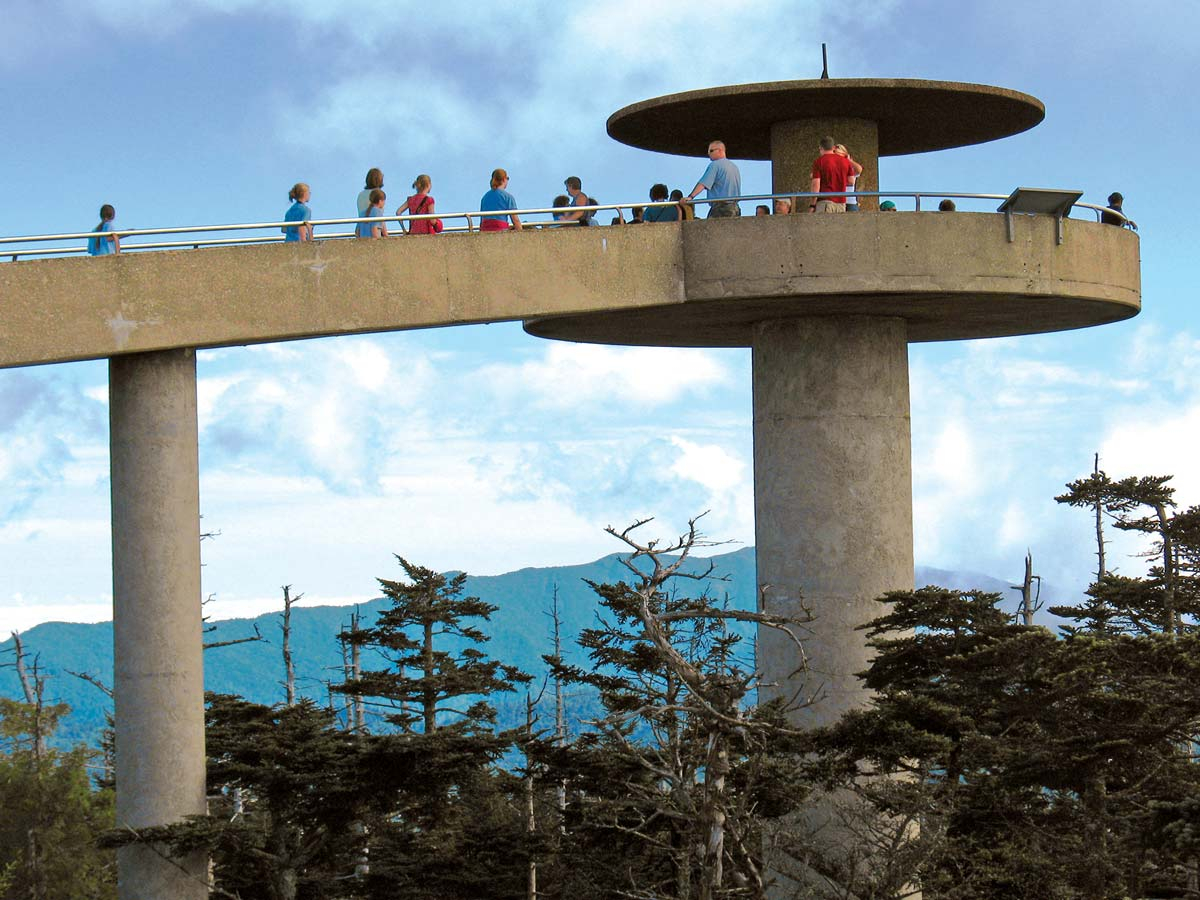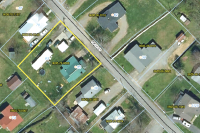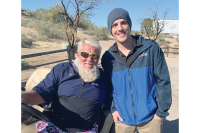Cherokee wants name change for Clingmans Dome
 Clingmans Dome. NPS photo
Clingmans Dome. NPS photo
Following a unanimous vote from the Cherokee Tribal Council July 14 , the tribe is expected to petition the federal government to change the name of the Great Smoky Mountains National Park’s highest mountain, Clingmans Dome, to Kuwahi — the name Cherokee people called it for generations prior to European conquest.
“We see this as an avenue for our younger generation to relearn who and what we are as a people, that Creator placed us here,” Yellowhill resident Mary Crowe told Tribal Council.
Crowe, who submitted the resolution together with Big Cove resident Lavita Hill, said the idea came to her following the May 21 celebration at Kituwah Mound , attended by representatives of the Cherokee Nation and United Band of Keetoowah Indians in addition to Eastern Band of Cherokee Indians citizens and elected officials. During the celebration, UKB Principal Chief John Bunch read a proclamation declaring May 21 as Kituwah Mound Day.
Crowe recalled the proclamation’s preamble, which states that the UKB received its name when seven wise medicine men climbed Clingmans Dome seeking instruction from the creator.
“The Creator said, ‘Your name will be Kituwah forever,’” said Crowe.
Kuwahi, which means “mulberry place” in the Cherokee language, was a site of special significance to the Cherokee people. Medicine people went there to pray and seek guidance from the Creator, and Cherokee people seeking to evade removal during the Trail of Tears used it as a refuge.
Related Items
“It’s a sacred place,” said Beloved Woman Myrtle Driver Johnson , who also serves as Indian Clerk for the Tribal Council.
The mountain became known as Clingmans Dome following an 1859 survey from Swiss-born geographer Arnold Guyot. Guyot named the mountain, which rises 6,643 feet above sea level, after U.S. Senator Thomas L. Clingman.
According to Tennessee Encyclopedia , Clingman’s name became associated with the mountain due to a dispute he had with Elisha Mitchell, a professor at the University of North Carolina, over which Appalachian peak was the highest. Clingman believed it was the mountain on the Tennessee-North Carolina line, while Mitchell believed it was a peak in the Black Mountains. Guyot completed a survey to settle the dispute and found that the mountain now named after Mitchell was 41 feet higher than the summit that bears Clingman’s name.
Crowe and Hill’s resolution takes issue with the name Clingmans Dome not just because it usurped the much older, longer-used name Kuwahi but also because Clingman, a supporter of slavery, fought for the Confederacy during the Civil War. He left his Senate seat in 1861 to join the rebel army, rising to the rank of brigadier general.
“The name Clingman is not derogatory in and of itself, but the history shows the act of changing the name of Kuwahi to Clingman’s Dome was racist and the racist action should be acknowledged and corrected,” the resolution states.
While there was some discussion in Tribal Council as to exactly how the new name should be spelled — the Cherokee language has multiple dialects, with speakers of different dialects rendering the name slightly differently — everybody seated around the horseshoe offered enthusiastic support to the name change concept. Hill and Crowe said they were working with the Cherokee Speakers Council to determine the most correct rendering of the name before making a formal name change application to the federal government.
The final decision on the matter will rest with the U.S. Board on Geographic Names , which is under the Department of Interior’s U.S. Geologic Survey. The board, which meets monthly, is comprised of representatives from federal agencies who serve two-year terms and together share the responsibility of standardizing geographic names with the Secretary of the Interior.
Once the EBCI submits a formal proposal, Board on Geographic Names staff will prepare a case brief summarizing the background of the existing name, reason for the proposed change and any other pertinent details. Before changing a well-established name, the board looks for local acceptance — it will seek input from county governments, federally recognized tribes, the National Park Service, the N.C. Board on Geographic Names and the Tennessee Geographic Names Committee before presenting the proposal for a final decision.
“A typical proposal will take around eight months from submission to decision, but given the significance of this geographic feature and the number of parties who may wish to provide input, it could take up to a year or more,” said USGS Spokesperson Rachel Pawlitz.
While renaming Clingmans Dome would be a dramatic shift for the iconic mountain, it would hardly be unprecedented. In 2015, the U.S. government decided to adopt the indigenous name of Denali for the Alaskan mountain previously known as Mount McKinley, and in June the National Park Service announced that Mount Doane in Yellowstone National Park would now be called First Peoples Mountain to honor the many tribes with significant cultural and historical ties to the land.
Last week, the Department of the Interior announced that its recently formed 13-member Derogatory Geographic Names Task Force had concluded its review of more than 660 geographic features whose names include an offensive slur often directed toward indigenous women. The Department of the Interior aims to remove the slur from place names on federal lands, and the Board on Geographic Names is scheduled to vote on final replacement names in September.
"As stewards of Great Smoky Mountains National Park history, we are charged to help ensure we are sharing holistic understandings of how people explored, used, and lived in this space before the establishment of the park," said park spokesperson Dana Soehn. "We want to avoid inadvertently perpetuating a single narrative about the Smokies that has been home to many peoples for thousands of years."
While Clingmans Dome is the only place name that the tribe is officially asking to see changed, other requests may follow.
“This may be just a stepping stone,” said Johnson, giving the example of the place name “Judaculla.” Recognized in English as the name of the seven-fingered giant who looms large in Cherokee legend, the word’s rendering of the Cherokee name for the giant is “so wrong,” Johnson said. As happened with many other names, white settlers and explorers wrote the words down the way they heard them — “and they didn’t hear it right,” said Johnson.
“I just want to tell you thank you. We appreciate this,” Big Cove Rep. Teresa McCoy told Hill and Crowe. “I have to agree with what’s been said. There are places in the neighborhood we need to correct the names on. While they may have had it for 70 years we had it, 15, 20 thousand years ago.”
Principal Chief Richard Sneed has signed the resolution.









